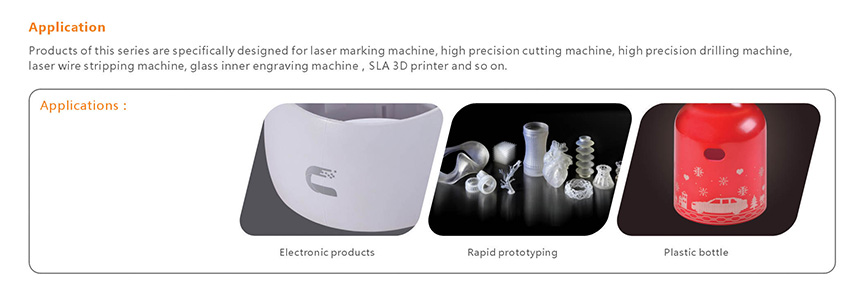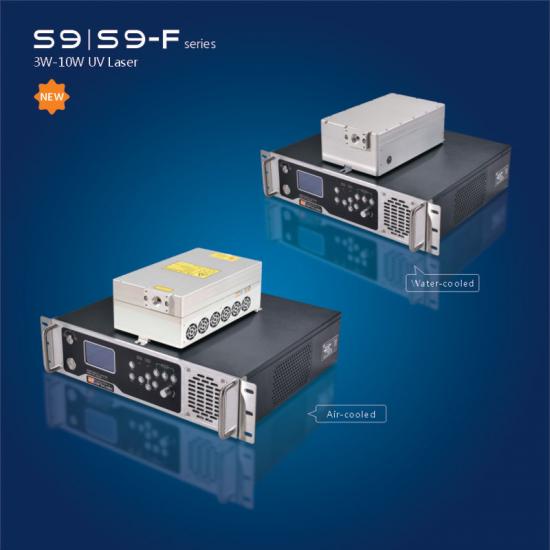
Ultraviolet nanosecond laser has become a dazzling star in the laser processing market in recent years
Aug 03 , 2022Ultraviolet nanosecond laser has become a dazzling star in the laser processing market in recent years
Ultraviolet nanosecond laser refers to a pulsed laser with a pulse duration ranging from tens to hundreds of nanoseconds and an output wavelength of ultraviolet light. It has the advantages of short wavelength, high material absorption rate, high peak power, small thermal effect, and high flexibility. 355nm ultraviolet nanosecond lasers are mostly used in industry, and are widely used in material cutting, drilling, marking and etching in the ultra-fine processing high-end market. Ultraviolet nanosecond lasers can be seen in applications of fine marking, cutting and engraving of food, 3C electronics and semiconductors.
Therefore, UV nanosecond lasers have become a dazzling star in the laser processing market in recent years, and shipments have grown rapidly. According to media reports, in 2015, my country's ultraviolet laser shipments reached 2,035 units, and in 2019, it reached 19,000 units, of which 17,465 ultraviolet nanosecond lasers were shipped, accounting for 92%.
Behind the dazzling shipment data, it is inseparable from the unique advantages of UV nanosecond lasers.
- cold working
Ultraviolet laser is a kind of laser that generates ultraviolet beam. It has short wavelength and high single-photon energy. When it acts on the surface of the material, it can directly destroy the molecular bonds on the surface of the material. This process does not cause "thermal damage" and "thermal damage". The material is removed and peeled off without heating or thermal deformation to the inner layer and periphery of the processed area. The edge of the processed material is smooth and the degree of carbonization is very low. With the ultra-narrow pulse width of about 20ns, the so-called "" cold working".

——Small spot
Because the UV light is easy to focus, the minimum focusing spot of the UV laser with excellent beam quality (M2<1.2) can reach 10um. The extremely small spot has three processing advantages: first, it can achieve a very precise processing position; second, it has a small heat affected zone; third, the lines are thinner, and very subtle tiny marks can be obtained through the micron-level fine spot , bringing anti-counterfeiting and traceability functions. It can be marked in a very small area to achieve product identification and traceability, and it is also conducive to anti-counterfeiting.
- high absorption rate
Most of the processing materials have a high absorption rate in the ultraviolet band, so ultraviolet lasers are often used to cut and scribe thin, hard and brittle materials such as glass, ceramics, silicon wafers, and sapphire. It is neat and has unique advantages that other laser sources do not have; and shallow laser coding of thermally sensitive materials such as films, plastics, FPC, etc., the contrast of the marking is high, and a very good processing effect can be obtained.
- Strong expansion
With the continuous expansion of customer applications, the requirements for precision machining in the manufacturing field are increasing, and the requirements for machining dimensional accuracy, machining position accuracy, machining edges and other indicators are getting higher and higher. The requirements are quite high, and this move forces the continuous technological update and rapid development of ultraviolet lasers, and the ultraviolet nanosecond lasers are developing in the direction of higher power and higher repetition frequency.
Today, the power of ultraviolet lasers ranges from 3W, 5W to 10W, 20W and above 30W, and the repetition frequency is also getting higher and higher, which can reach hundreds of KHz. With the increase of power and repetition frequency, the application of cutting field is also more extensive, suitable for materials such as cover film, PCB board, thin metal and silicon wafer. Compared with the traditional cutting process, laser cutting is more flexible, and it is more efficient in cutting applications of various curves, small angles and chamfers.

In material processing applications, UV processing has basically become synonymous with precision cold processing. With the development of emerging industries such as 5G, new energy, and display panels, there is a strong demand for higher-precision chips, higher-resolution screens and various flexible materials, which has spawned more business opportunities. It is expected that in the future, the market demand for ultraviolet lasers will also be fully released, and it will become an indispensable and important force in more precise and more precise application scenarios.